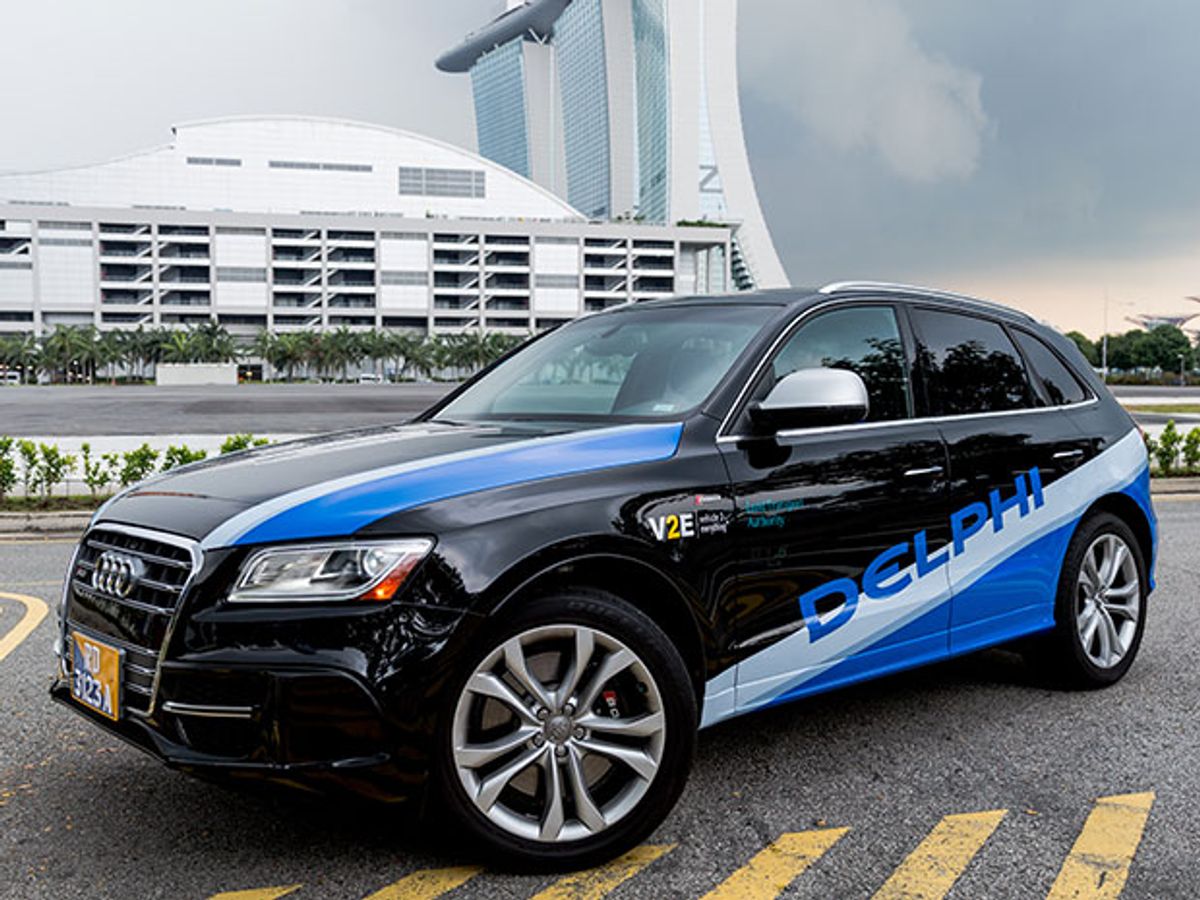Robotaxi tests will soon begin in Singapore, and commercial service is projected for 2019, says Delphi, the auto supplier that’s running the project alongside the Singaporean government and with help from Mobileye.
“It’s one of the first, if not the very first, pilot programs where we’ll demonstrate mobility-on-demand systems,” Glen DeVos, a Delphi senior vice president, told Bloomberg News at a press briefing at the company’s headquarters in Troy, Michigan. Mobility on demand is fancyspeak for ride-hailing, such as Uber and Lyft offer. DeVos added that later this year Delphi will announce similar programs in Europe and the United States.
Nutonomy, a spinoff of the Massachusetts Institute of Technology, has already road-tested its own robotaxi concept in Singapore’s central business district. That company also plans to go commercial soon.
Delphi’s first modified cars—Audi Q5’s, fitted with extra sensors—will have drivers behind the wheel and will follow three, well-mapped circuits just 5.6 kilometers (3.5 miles) around. After researchers gain experience, they will let the cars dispense with their human minders and range over the entire city-state.
Singapore, an island, is a good testbed because of its compact size, sober drivers, unified government, and congested roads. Robotaxis can ease congestion because they should decrease the number of cars on the road and they rarely need a parking space.
A cab ride in a dense urban area can cost US $3 to 4 a mile, DeVos said. “We think we can get to 90 cents a mile.”
Those figures agree with the 75 reduction in cost estimated back in 2013 by Larry Burns, director of the Program on Sustainable Mobility at Columbia University. Burns based his calculations on conditions in Ann Arbor, Michigan.
Robotaxis will have to cope with Singapore’s tropical weather, which gets an average of 232 centimeters (92 inches) of rain a year, making it one of the wettest large cities in the world. That’s bad news for cameras and even LIDAR, although not for radar.
It’s interesting that Delphi is developing the robotaxis with help from Mobileye, the Israeli firm that has so far specialized in automated driving based on a single camera. That will change, though: Mobileye is preparing its next-generation system to fuse the output of multiple, complementary sensor systems.
Philip E. Ross is a senior editor at IEEE Spectrum. His interests include transportation, energy storage, AI, and the economic aspects of technology. He has a master's degree in international affairs from Columbia University and another, in journalism, from the University of Michigan.



